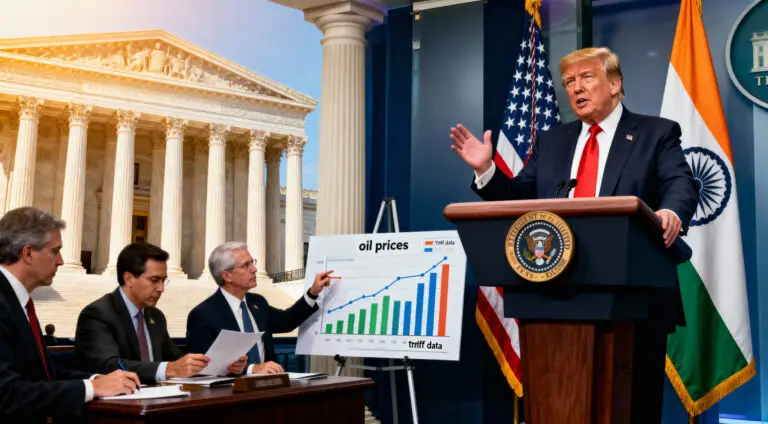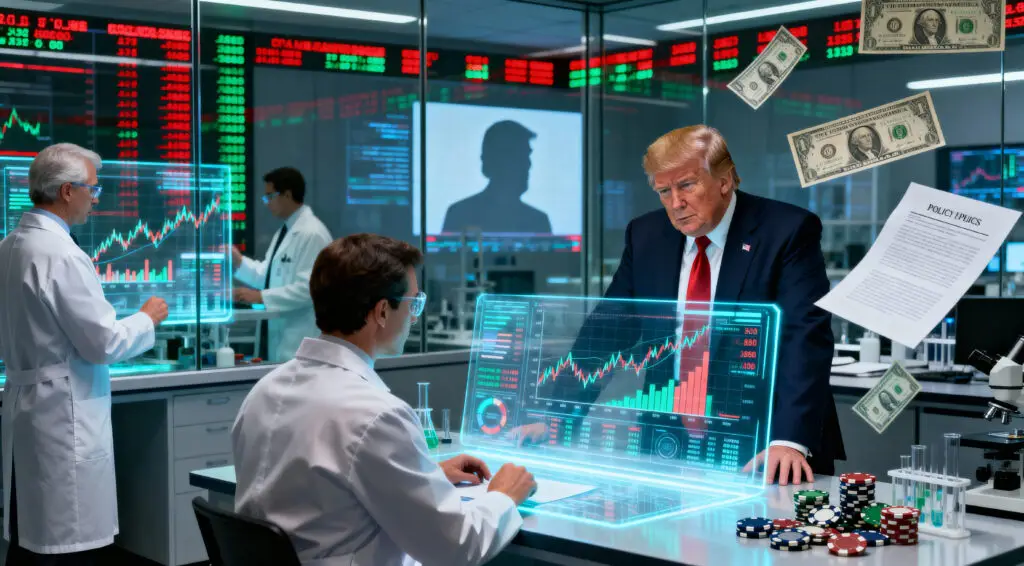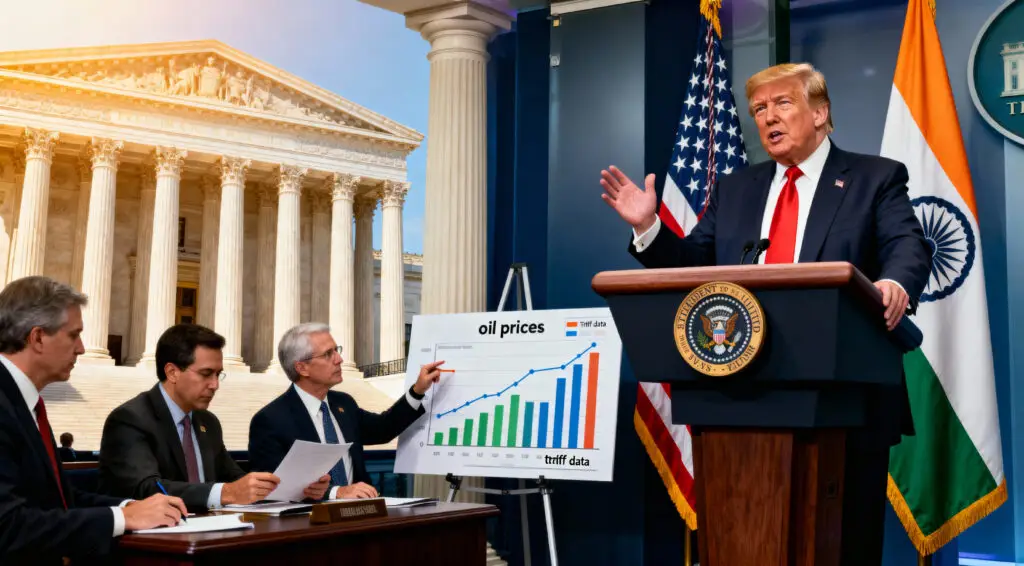A 39% Tariff Slams the Swiss Watch Industry
The U.S. government has officially implemented a significant 39% tariff on imports from Switzerland, a move that is set to send shockwaves through the global watch industry. This decision came into effect at midnight on Thursday in the U.S. after a diplomatic trip by Swiss officials to Washington, D.C., failed to secure a last-minute reprieve from the Trump administration. The sharp increase in import costs for what is the biggest single market for Swiss watches poses a severe challenge to an industry already grappling with a post-pandemic-era downturn in global demand.
Complicating matters further, a rising Swiss franc, which has gained 12% against a weaker U.S. dollar this year, is increasing the cost of production. This combination of a strong currency, rising input costs, and now a punitive tariff has created a “highly toxic cocktail” for the industry, according to Jean-Philippe Bertschy, managing director at Vontobel.
The U.S. Market: A Critical Growth Driver
For the past five years, the United States has been a crucial growth driver for the Swiss watch industry, with approximately 20% of the industry’s exports destined for the U.S. This dependence makes the new tariff policy particularly impactful. The 39% tariff level imposed on Swiss goods, with the exception of pharmaceuticals, is among the highest in the developed world. This places Swiss watchmakers at a significant competitive disadvantage, especially when compared to other watchmaking countries like Japan and Germany, which, as part of the European Union, are facing U.S. tariffs of just 15%.
With demand for Swiss watches waning in key markets like Europe and China, the U.S. market was a vital source of stability and growth. The new tariffs, which mark a dramatic increase from the previous 10% rate, threaten to erode this key market and force a major recalibration of sales strategies for Swiss brands.
The Impact on Small Brands and U.S. Dealers
The new trade policy is expected to impact certain segments of the watch industry, particularly entry- and mid-level priced brands, as they often operate on thinner margins and may struggle to absorb the sharp jump in import costs. This sentiment is echoed by Albert Edelmann, co-founder of small Swiss watch brand Zeitwinkel, who has few choices but to accept the sharp jump in costs.
The policy also poses a significant danger to U.S. multi-brand watch dealers, particularly those specializing in smaller, less mainstream Swiss brands, who may find it difficult to maintain their inventory and business models under the new tariff regime, potentially leading to a significant contraction in the market for niche Swiss watches in the U.S.
A Political and Economic Firestorm in Switzerland
The implementation of a U.S. tariff has sparked a political and economic crisis in Switzerland, with economists estimating a potential contraction of 0.3% to 1% in Swiss economic growth. Despite Switzerland being the seventh-largest foreign investor in the U.S., diplomatic efforts to avert the tariffs failed. The Federation of Swiss Enterprises claims the duties weaken international competitiveness, jeopardize trade relations, and endanger thousands of jobs. The political fallout is significant, as leaders face pressure to find a resolution to a crisis that could have lasting repercussions for the national economy.
Read More: Yorkshire Water CEO Pay Offshore Payments Spark Outrage
The Diplomatic Failure and Trump’s Stance
The breakdown in negotiations was brought into sharp focus by a phone call between Swiss President Karin Keller-Sutter and U.S. President Donald Trump on the eve of the tariff deadline. According to sources familiar with the matter, the call did not go well. In an interview with CNBC, Trump described the conversation, stating, “The woman was nice, but she didn’t want to listen.” The president’s comments centred on the U.S. trade deficit with Switzerland, which he noted is about $38.5 billion.
He pointed out that this deficit is primarily due to gold and pharmaceutical products, which are exempt from the new 39% tariff. The core issue, according to Trump, was the lack of concessions from the Swiss side that would have generated positive publicity, or “PR wins,” for his administration, unlike what the European Union and Japan had offered with promises of billions in investment. This highlights a political dynamic where a diplomatic solution was contingent on public-facing concessions that Switzerland was either unwilling or unable to make.
The Impact on Pricing and Consumers
For consumers, the new tariffs are likely to result in another round of price increases for Swiss watches. Most of the top Swiss watch brands, including Rolex, Omega, Patek Philippe, and Audemars Piguet, had already raised their U.S. prices by 3% to 10% in response to the initial 10% tariff rate. Now, with the new 39% rate, brands, importers, U.S. distributors, and retailers face the difficult decision of how to divide the additional costs.
It remains unclear how much of this increased cost will be passed on to consumers, who have already endured double-digit percentage price increases over the past five years. The new tariffs could further test consumer demand for luxury watches in the U.S., potentially leading to a shift in purchasing behaviour. The industry is in a precarious position, needing to balance the need to maintain profitability with the risk of pricing themselves out of a crucial market.
Switzerland’s Response to Tariffs A Call for Stability
In the wake of this tariff dispute, an editorial in the Swiss newspaper Neue Zürcher Zeitung offered a clear message for the nation’s path forward. The paper advised that “Switzerland must focus on its strengths and remain what the U.S. is no longer: stable and predictable.” This commentary reflects a deep concern about the volatility of U.S. trade policy and its potential to disrupt long-established economic relationships.
The editorial further urged Switzerland to “secure trade with as many other partners as possible if things get shaky with the U.S.” This strategic advice highlights the importance of diversifying trade partnerships to mitigate risks from any single market. The lesson from this tariff crisis is that, even for a robust economy like Switzerland, relying too heavily on one trade partner, particularly one with unpredictable political dynamics, can pose a significant threat to its economic stability and long-term prosperity.















